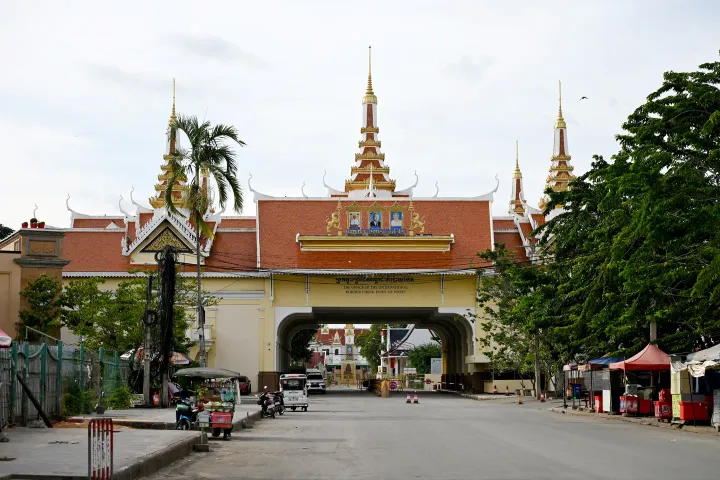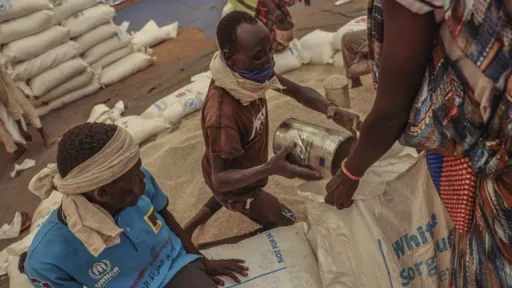By Firmain Eric Mbadinga
Centuries after being first imported to Africa, reportedly from tropical America, it is hardly surprising that cassava is now ingrained in the traditional cuisines of communities in many parts of the continent.
Restaurateur Éliane Obiyi, a native of Gabon's Haut-Ogooué province, is among the millions of Africans to have integrated cassava into almost every other dish she rustles up.
As someone trained in healthcare, she is particular about what goes into her food, and cassava in all its forms seems to fit the bill.
"Among the varied agricultural produce I prefer to use, cassava gets pride of place because it can be processed in different ways. It is also integral to our African culture," she tells TRT Afrika.
Éliane began her commercial and culinary journey by selling takeaway food on the street. She transitioned to home delivery before opening her fast-food restaurant in Franceville, the provincial capital of Haut-Ogooué.
Throughout all these stages of her business, the preparation of the manioc tuber is based on the techniques she learnt from her parents. She continues to refine these processes, churning out innovative dishes with cassava as the primary ingredient.
"Dokô, or manioc obamba, is made by soaking the bitter cassava tuber in plenty of water for several days to soften it," explains Éliane.
"It is then filtered and crushed in a machine until a paste is obtained. After this phase, the cassava should be boiled around the edges. The final step is to wrap the pre-cooked mixture in a traditional sheet and bake it for around 20 minutes."
Array of dishes
Alongside Dokô, widely eaten in Gabon and other countries such as Cameroon, Guinea, DR Congo and the Republic of Congo as well as Angola, Attiéké is another popular take on the cassava tuber.
''To make Attiéké, you must take the tuber straight from the ground, wash, and crush it in a machine. Once crushed, you have to squeeze out 90% of its water. After this stage, sieve the tuber leg and cook the same day," says Éliane.
"The principle is to stir it continuously over low heat to prevent it from sticking to the pan, and then dry it in a couscous pot containing water for about five minutes."
Another way of cooking the manioc tuber, whose leaves are also edible, is Gari. This is made in the same way as Attiéké, with one exception.
"The difference between Gari and Attiéké is after the sieving stage. Both products are crushed in a machine, wrung out, and sieved. However, unlike Attiéké, which has to be cooked immediately afterwards, Gari is obtained by drying the resulting leg in the sun for several days," says Éliane.
Gari is often eaten as a cereal with milk and sugar or cooked in water and oil with a pinch of salt.
As popular as Attiéké, Dokô and Gari are, particularly in West and Central Africa, Foufou is no less popular. This dish, also called Fufu, is made by boiling cassava powder and often served as an accompaniment to dishes rich in sauce.
As a caterer, Éliane says she has noticed a greater interest in Dokô among her customers and makes the most of it. "I still have some experience to gain, but this business is quite profitable and will eventually enable me to be financially independent."
For the next stage of her business, encompassing a broader range of catering services, Éliane dreams of conquering her home province with varied cassava dishes and then setting her sights on Libreville, the Gabonese capital, where there is a strong demand for the tuber in all its forms.
Prices of cassava in Gabon range from 500 CFA franc and upwards for a 500gm stick. The same applies to Foufou, Gari, and cassava leaves, which are used as vegetables.
➤Click here to follow our WhatsApp channel for more stories.
























